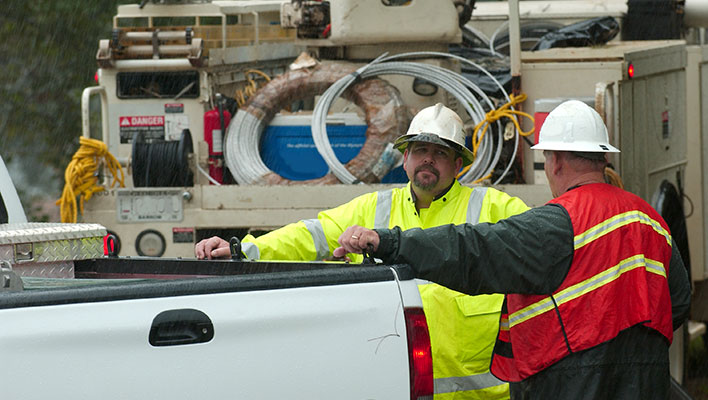A lot has changed in the past few years. Many workers have gone remote and are not regularly going into the office. It has become harder to hire, train, and retain strong talent as the Great Resignation has seen many Americans change jobs. More turnover is expected in the utility industry in the next five to eight years. At the same time, major storms have also struck more frequently, leading to longer and more widespread outages. All of these present a challenge to utility companies.
Thankfully, the challenges are not insurmountable. A variety of advancements are making these hurdles easier to get past and setting companies up for future success. Utilities must increase efficiency and speed of restoration with fewer resources to maintain service as it’s been, let alone improve it. ARCOS has solutions to help you do just that, setting you up for success.
Hardening the System
ARCOS’ own Jim Nowak retired as manager of emergency restoration planning for AEP (American Electric Power) in 2014 with thirty-seven years’ experience. He recently reflected upon these very issues in PowerGrid International. He noted that many utilities, including Florida Power & Light, have been working to harden their systems. They’re upgrading them to better withstand severe weather events.
Upgrades like this are important, but costly. Further complicating the situation, some parts of systems do get hardened and don’t break down during events. This can lead to a false sense of security; consumers don’t want to shell out the hundreds of billions of dollars it would take to truly make utilities in the United States ready to face major storms if they don’t see the problem affecting them. So, while these are ongoing efforts, they aren’t going to be fully implemented in the near future.
Better Resource Management
A more cost-effective solution, at least for now, is making the resources you already have work more efficiently. One way to do this is through automation. Automated callouts have been used for some time to get responders in the field when disasters strike. More can now be done ahead of time to target these repairs more precisely. Specialized crews can be set up to easily activate with a few clicks. Multiple scenarios can be mapped out to quickly scale the response up or down as needed. Data can be analyzed from past situations so that labor and equipment resources are staged in the most appropriate places for them to be mobilized.
None of this prevents an outage, but it does help to restore power more quickly when outages occur. It also helps shore up the weakest link in a much cheaper way than rebuilding systems to not go down in the first place. The public is more accepting of outages when they don’t last as long. This helps utility companies provide service while waiting on those long-term upgrades to slowly be put in place.
Work From Wherever
Many utility employees can’t work from home, as their tasks take place in the field. There are still ways to decentralize the office to make operations run more smoothly. Many utilities have created take-home kits for staff members to ramp up from where they live. Not only does this allow workers to perform their jobs where they are most comfortable, it also saves time. When an event occurs, employees can almost instantly begin to respond instead of needing to drive to an office first. Without needing to allow for travel time, it’s easier to rotate staff in and out of deployment when they are already in their own living space.
Now, this may not be appropriate for every aspect of the operation. Some tasks must be performed on secure networks, which aren’t easily accessed remotely. But smaller satellite branches may also be an option, closer to where workers live than a central office. So even if the employees need to travel, they may spend less time doing so. This improves efficiency and increases job satisfaction, allowing greater flexibility for employees.
Whether it is automating response or shifting where people work, these advancements allow more work to get done with less. This will help utilities better withstand labor shortages and mass retirements. It also makes the jobs more attractive to potential employees, which reinforces the same.
ARCOS’ suite of resource management solutions can help you prepare for, and respond to, emergencies. Our Incident Manager, in particular, can take off much of the pressure from emergencies if properly set up ahead of time. And when the storms hit, we can help you callout crews, manage your resources, and even give you real-time visibility into the field.
Contact us to get started so you’re ready before the next emergency hits.




